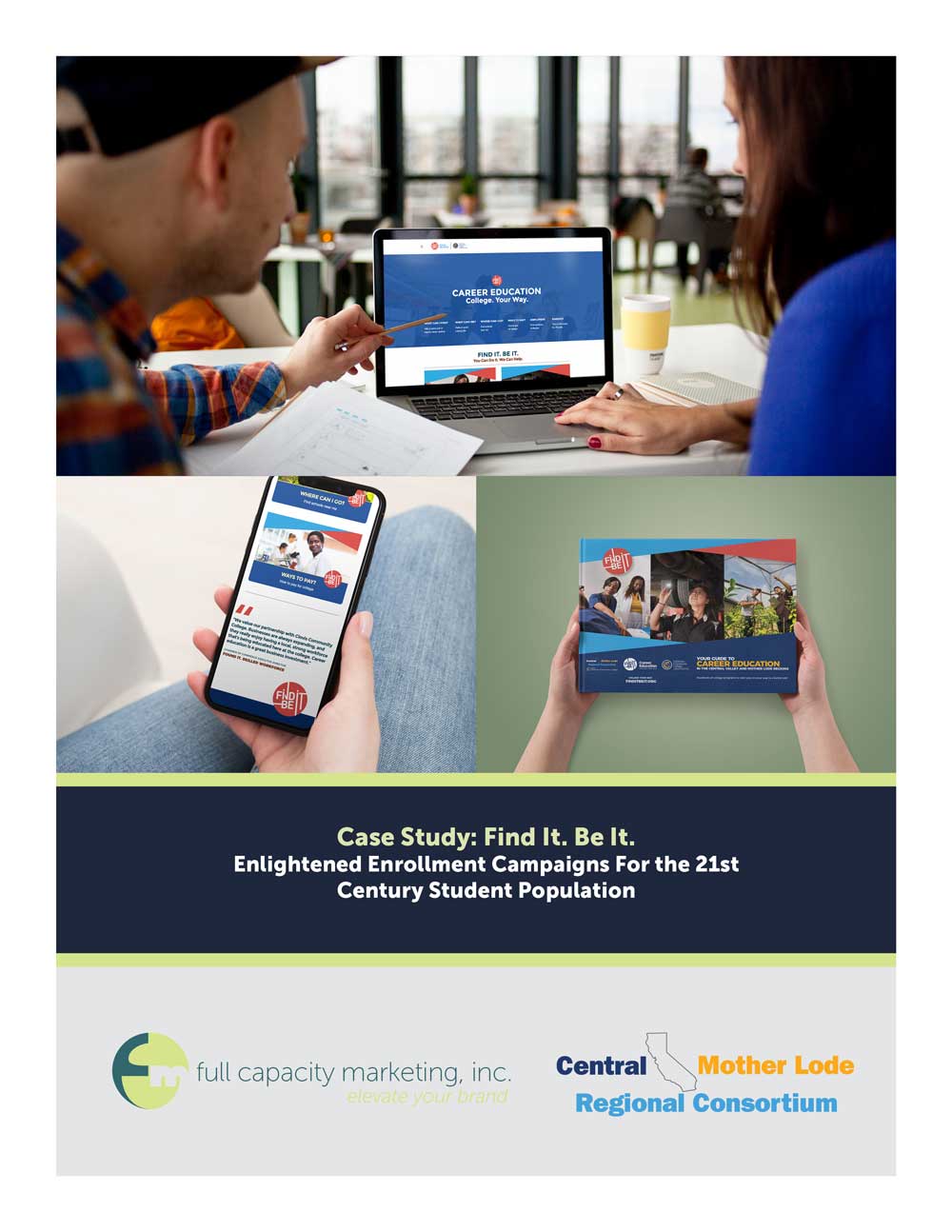
Will Community College Enrollments Really Rise During the COVID-19 Recovery?
This blog explores the opportunities community colleges have to increase enrollments in CTE and how personas can create the right messaging to attract them.

Part 1: The Opportunity in Career Technical Education
Historically, community college enrollment has increased during times of recession. During the last recession, enrollment at community colleges increased by 33% between 2006 and 2011, according to the U.S. Census Bureau.
In 2010, 29% of all students enrolled were in two-year colleges. By 2015, this share had fallen to 25%, which was below the pre-recession average of 26%. However, the number of students enrolled in two-year colleges was still 10% above the 2006.
Will these enrollment spikes hold the same as the economy recovers from the coronavirus? Already, an estimated 28 million Americans have canceled their plans for education, according to an April consumer survey by the Strada Education Network’s Center for Consumer Insights. So far, the number of people intending to pursue more education or training as part of a recovery path has not increased in the last year.
However, the survey also found that the majority of adults considering enrolling in an education or training program in the next six months prefer non-degree programs. And for those Americans looking to enroll in the next six months, 34% would seek more skills in their current career field, while another 34% would seek skills for a new career field.
Given this data, colleges would benefit from including in their fall 2020 recruitment plans marketing that promotes their career technical education (CTE) certification programs, which give students a fast-track to a new career or allow them to quickly gain news skills that help them in their current jobs. Recruitment efforts should include highly targeted outreach to students who are most likely to enroll in CTE courses.
In this blog, we explore increasing CTE enrollments.
Marketing CTE: It’s all about the personas
A common misconception about CTE is that it’s training that leads to dead-end jobs with no room for advancement. This article by the National Education Association describes CTE programs as once being designed to track students who supposedly weren’t “college material” into jobs after high school. In reality, CTE graduates are 10%-15% more likely to be in the labor force and make 8%-9% more in annual income, according to the Brookings Institute.
FCM has worked with more than 100 colleges across the nation to increase CTE enrollments within a multitude of markets. Our collective research and outcomes demonstrate that those likely to enroll in CTE are focused more on how the courses will change their lives than they are on the technical knowledge they will gain.
Like many consumer brands, FCM uses psychographic modeling to create individualized student personas – fictional characters who represent the different user types within a targeted demographic, attitude, or behavior set who are likely to enroll. Personas often are combined with market segmentation to represent specific customers and is an especially effective tool for capturing the nuances within a college’s diverse region.
Personas in Action
Enrollment in CTE was declining at the 14 California community colleges in the Central/Mother Lode Regional Consortium (CRC), which serves 4.4 million people in 15 counties in central California. Given the broad geographic area covered by the consortium, including mid-size cities, small towns and rural areas, and wide range of ages, it was important to discover the unifying core messaging that would cut across age, background and lifestyle.
While there were several key motivating factors including a common one of finding good jobs, as important in this region was that the jobs needed to be close to home. Connection to community and family was a major factor in decision-making for students in the region.
Here are two examples of personas that led to the development of the successful CRC enrollment campaign:
Example #1:Rosa – The Mainstream Good Student
Rosa is the oldest of four girls and two boys. Her mom and dad are agricultural workers. Rosa did well in high school, but she doesn’t know anyone other than her teachers who have a degree, and no one expects her to continue her education after high school. The expectation is she will stay close to home and be there for her family. Rosa graduated this year and works in a minimum-wage job. She has a wide group of friends and family in the community, and they are an important part of her life. She loves to post her fashion choices on Instagram and connect in person and on Snapchat with her female same-age cousins. Her younger cousin’s quinceañera is coming up, and she is excited to get together with her whole extended family. She is ELC for UC Merced, but even that is too far, in distance and culture, from her family and the life she knows and loves.
Example #2: L’chelle -The Mainstream Lost and Found

L’chelle did not graduate from high school but completed her GED after 10 years of working as a cafeteria worker at a local hospital. Her children are in school, and she would like to get a better job, so she can send them to college someday. Her extended family all live in the area, and she sees them regularly. She knows people at the hospital who have postsecondary education at all levels but is not exactly sure what options are available or even if she wants to work in healthcare. She has changed her life and has the ability to focus and pursue new opportunities now at an older age.
From Personas to Enrollment Messaging
Knowing the motivations of potential students is critical to the development of messaging and telling stories that resonate with those of similar beliefs. In the examples above, there is a core emotional need of potential students to work at good-paying jobs that allow them to stay and thrive in their own communities.
Tested across multiple stakeholders, the brand name and tagline, Find It. Be it. – College Your Way, resonated most favorably with prospective students likely to enroll in career education and formed the platform to create lasting emotional bonds.
Check out this sampling of the videos in which students shared their experiences of how CTE delivered good jobs, close to home:

Joselyn Buckley was accepted and prepared to attend a 4-year college to study cybersecurity. Two weeks before she accepted the offer, she had second thoughts that led her to Porterville College.

Brendan Miller knew he was interested in a hands-on job, and he found his instructors were adamant about placing students in good jobs.
Like this article?
If you like this article we recommend downloading our eBook below to get better informed

Case Study: Find It. Be It.:
Enlightened Enrollment Campaigns for the 21st Century Student Population
Share this article

Thought Leaders in Workforce, Education & Entrepreneurship



Comments
There are no comments yet